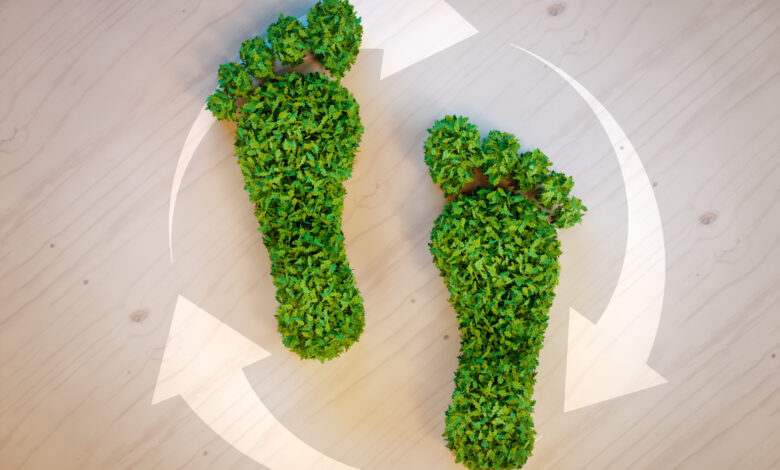How to Reduce Carbon Footprint

Do you want to be a good steward of the planet you live on? Do you care about reducing your carbon footprint?
It’s important to care about this. Conscientious conservation is part of being a responsible person. It would help if you wanted to leave the planet in better condition than you found it for future generations.
But how to reduce carbon footprint? It’s not always easy to know where to begin.
However, we can help. This article takes a critical look at our environmental impact and points you in the right direction. Keep reading to get the inside scoop!
Table of Contents
Conserving Energy
Most of us are guilty of wasting energy in our homes leaving lights on when we leave a room, not bothering to unplug electronics when they’re not in use, or cranking up the air conditioner on hot days. But did you know that those little actions can have a big impact on the environment?
The average household produces about 10,000 pounds of carbon dioxide each year. And while some of that comes from big things like owning a car or flying in an airplane, a lot is due to our everyday choices.
Fortunately, there are plenty of easy ways to save energy and reduce your carbon footprint. Conserving energy not only helps the environment, but it can also save you money on your energy bills. You can also support carbon capture technology companies that aim at net zero carbon emissions.
There are also some simple ways to conserve energy.
Change Light Bulbs
One easy way to reduce your carbon footprint is to change your light bulbs. Traditional incandescent light bulbs are inefficient, wasting energy as heat. Compact fluorescent light bulbs (CFLs) use much less energy to produce the same amount of light.
LEDs use even less energy than CFLs. Switching to energy-efficient light bulbs is an easy way to save money and reduce your carbon footprint.
Use Power Strips
Power strips are a great way to save energy and reduce your carbon footprint. When you plug multiple devices into one power strip, you use less energy overall. It reduces your carbon footprint because you use less energy from the power plant.
Use Less Aircon
Air conditioners are one of the largest consumers of electricity in the home and therefore produce a large number of greenhouse gases. Turning your air conditioner off or down when you don’t need it can help reduce your carbon footprint.
Turn Water Heater Down
One of the most impactful things we can do is to turn our water heater down. When we use less hot water, we save energy and reduce emissions of carbon dioxide and other greenhouse gases.
Install Low-Flow Showerhead
It will help reduce the amount of water you use and, therefore, the energy needed to heat it. You can also look for other ways to reduce water usage, such as using less water when brushing your teeth or taking shorter showers.
And finally, try to use less energy overall by turning off lights when you leave a room or unplugging appliances when you’re not using them. Every little bit helps!
Adjust Thermostat
In the winter, set your thermostat to 68 degrees when you’re home and awake and lower it when you’re asleep or away. In the summer, set your thermostat to 78 degrees.
By making simple adjustments to your thermostat, you can save energy and money while reducing your carbon footprint.
Driving Less
One of the easiest ways to reduce your carbon footprint is simply driving less. If you can carpool, walk, or bike to your destination, that will help reduce emissions.
You can also be mindful of the types of errands you run. If you need to make a few quick stops, try to do them all in one trip instead of making multiple trips.
Carpooling is another option when driving is necessary. If everyone in a neighborhood or office carpooled just once a week, you would significantly reduce emissions. If everyone tried to drive a little less, it would have a big impact on the environment.
Public transportation is another great way to reduce your carbon footprint. Taking the bus or train instead of driving your car significantly reduces emissions. Working from home, even one or two days a week, can also make a big difference.
Flying Less
Flying emits a lot of carbon dioxide into the atmosphere, so by flying less, you can help to reduce your carbon footprint. There are a few things you can do to make this happen.
You can fly less by taking vacations closer to home, taking the train or bus instead of flying, or working more often. You can also fly coach instead of first class and fly direct flights whenever possible.
Eating Less Meat, More Organic Food
Reducing carbon footprint can be as simple as changing your diet. Meat production creates many greenhouse gases, so you can significantly reduce your carbon footprint by eating less meat.
Many delicious vegetarian and vegan recipes are available, so you can still enjoy your favorite foods without contributing to climate change.
Eating local and organic foods reduces the energy and resources required to produce your food. It also cuts down on the pollution caused by transportation. Buying from farmers’ markets or joining a CSA are great ways to eat locally.
When it comes to organic food, look for the USDA organic label. It ensures that your food is produced without toxic chemicals and pesticides. Not only is organic food eco-friendly, but it’s also healthier for you.
Recycling
By recycling, we can help to reduce the amount of carbon that is emitted into the atmosphere. Recycling allows us to reuse materials that would otherwise end up in landfill sites, where they would release methane a potent greenhouse gas.
When we recycle, we also save energy. It takes more energy to create products from scratch than it does to recycle existing materials. And by recycling paper and cardboard, we can reduce the number of trees that are cut down.
This can be done by separating your trash into recyclables and non-recyclables and then taking your recyclables to a local recycling center. You can also reduce your carbon footprint by composting your food scraps and other organic materials.
Separating Trash
In order to reduce your carbon footprint, it is important to separate your trash properly. Recycling materials like paper, plastic, and glass helps to save energy and resources.
When disposing of hazardous materials, it is important to follow the proper protocol to ensure that these materials are not released into the environment.
Composting
Composting is the breakdown of organic matter, such as food scraps and yard waste, by microorganisms into a richer soil amendment. Not only does this reduce the amount of waste that goes to landfills, but it also cuts down on methane emissions, a powerful greenhouse gas.
There are many ways to compost, whether you have a backyard or not. If you have the space, you can start your own compost bin or pile.
If you live in an apartment, there are community gardens that you can participate in, or you can purchase a compost bin that fits under your sink. No matter how you do it, composting is a great way to reduce your carbon footprint.
Laundry Less
How to reduce your carbon footprint when it comes to the clothes you wear is actually pretty simple – launder your clothing less often. Washing your clothes uses energy and water, which can harm the environment.
If you’re able to, air dry your clothes instead of using the dryer. Hang them up on a line or rack inside your home or outside. This will save energy, and your clothes will last longer too!
Buying Quality Clothes
Another way to reduce your carbon footprint in fashion is to buy quality over quantity. It’s better to have a small closet of well-made and long-lasting clothing than a giant closet full of cheaply made items that will fall apart after a few washes.
Not only is this better for the environment, but it’s also better for your wallet in the long run.
Know How to Reduce Carbon Footprint Today
To help save the environment, you should know how to reduce carbon footprint. You should take these steps: reduce energy consumption at home, drive less, walk or bike more, use public transportation, fly less, eat organic food, recycle, compost, laundry less, and buy quality clothes.
You can make a difference and help reduce your impact on the environment by making minor changes in your daily life.
For great tips on everything, check out our other articles!




